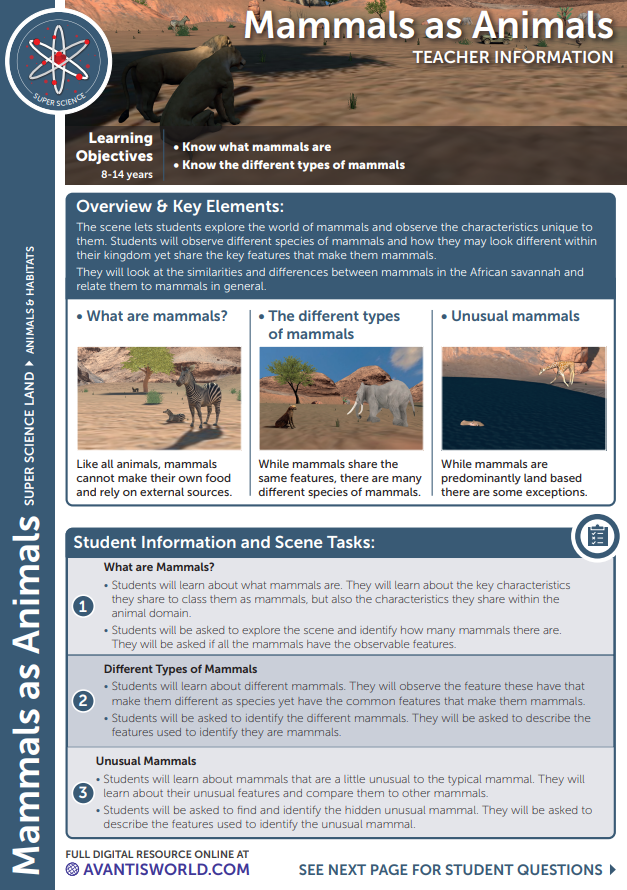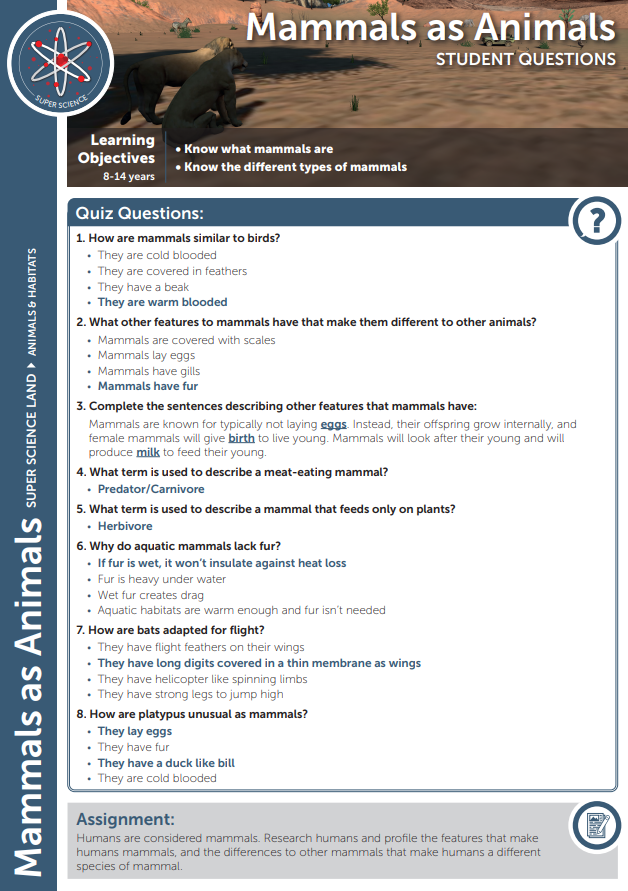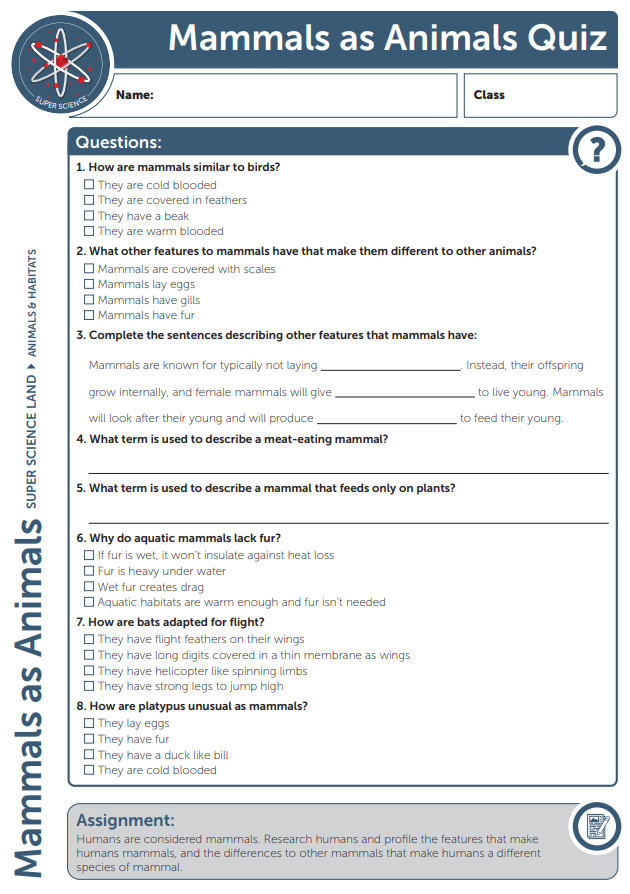 Loading...
Loading...
Initial language selection is based on your web browser preferences.
# Learning objectives 1: Be able to describe a typical mammal{.info} 2: Be able to identify and describe different types of mammals{.info} 3: Be able to compare the similarities between different species of mammals{.info} # What are Mammals?{.objective .objective1} In this section, a description of a typical mammal will be provided. Mammals, as vertebrates, share many features making the different to other vertebrates. Features include, fur, warm blooded, mammary glands, give birth to live young and their offspring develop internally. # Different Types of Mammals{.objective .objective2} In this section, different types of mammals are outlined. Comparisons are made to how different species of mammals share common features, yet are different as they are adapted to their own habitats, diet, and more. Students should observe the examples and discuss similarities and differences. # Unusual Mammals{.objective .objective3} In this section, unusual mammals are outlined. While the majority of mammals are terrestrial and live on land, some are even more unique, such as aquatic mammals, and flying mammals. These either lack or have additional features making them suited to their environment. Bats have a thin, lightweight membrane across their digits on the limbs that make up their wings, needed for flight. Whales have no fur as they live in water. Wet fur would not work well as an insulator. Instead they have an unusual amount of fat under the skin to insulate them. # Teacher Resources ### Download Teacher Notes [](https://data.avncloud.com/activities/793676/files/Mammals%20Teacher+Notes+Only.pdf?date=1677250435&size=949092&md5=a43b94a5303e6e5c642281624a5c4880) ### Student Quiz Answers Document [](https://data.avncloud.com/activities/793677/files/Mammals%20Quiz+answers.pdf?date=1677250782&size=480555&md5=01bc0b0620fa66ac2036e27782f82eb5) ### Download Student Quiz Document [](https://data.avncloud.com/activities/793678/files/Mammals%20Quiz+only.pdf?date=1677250866&size=94341&md5=aa3407c10a28ca498ba092eacd2c9957)